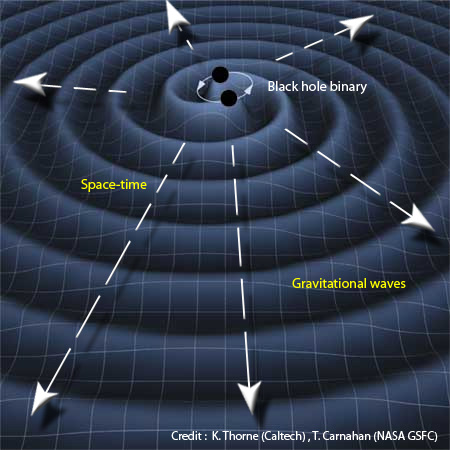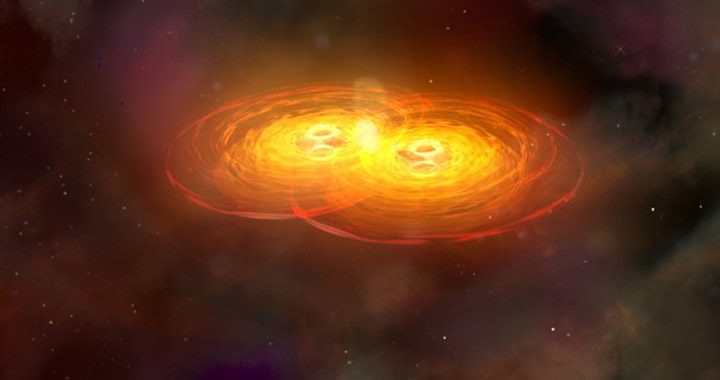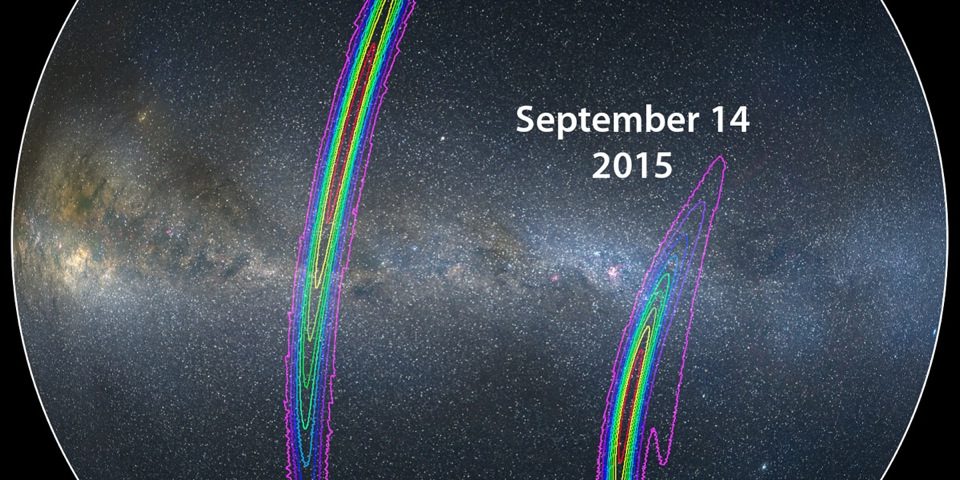
Gravitational waves and Light
Gravitational waves: ripples in space and time
Our best description of the fabric of space and time itself is Einsteins Theory of General Relativity. Immensely successful right after its publication in 1905, one main feature of the Theory remained untested for 100 years: the existence of gravitational waves. Space and time are not 'nothing' but is a very stiff framework in which bodies such as the Sun and the stars move. According to Einstein this fabric of space-time itself can be shaken when very massive objects suddenly move: acceleration of mass. These sudden motions occur when stars explode in supernovae or when neutron stars and black holes collide. These sudden motions of matter cause ripples, like a stone thrown in a pond. These ripples are gravitational waves. They move outwards from the source with the speed of light. When they reach the Earth they can be detected with laser interferometers such as Advanced LIGO and Advanced Virgo.

Matter and mergers
When two black holes merger we don't expect any light to emerge unless the two black holes are inside a very dense environment.
If one or both of the components is a neutron star, the situation is very different. Numerical modelling of mergers with neutron stars shows that not all the material disappears into the newly formed black hole. A small fraction, about 1-2% of the mass, forms an extremely hot torus of matter around the system. It is this gas that is heated to more than 5 billion degrees. When gas gets this hot nuclear fusion processes occur. In this case it creates heavy metals, among which gold and silver. These mergers of neutron stars is expected to be the main production site of precious metals in the Universe, including that in our rings, necklaces and golden dollars!


Why BlackGEM?
There are already many telescopes in the world, so why build a new one to see the golden glow? Because no telescope dedicated to the search of these events has the combination of field-of-view and sensitivity required. The golden glows are expected to be faint, and fleeting. Even more importantly: the accuracy with which Advanced LIGO and Virgo can pinpoint these events on the sky is very low: somewhere in an area as large as 400 times the Full Moon. Any telescope that wants to detect the golden glows must therefore:
- be sensitive enough to detect the faint flows ('sensitive')
- have a field-of-view big enough to cover the full area ('wide field')
- be ready to go as soon as an event is detected ('robotic and dedicated')
It was these three requirements that were used to design BlackGEM.

